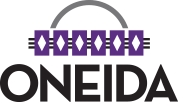Non-Service Connected Pension
Eligibility
Non-service connected pension is a benefit that provides financial support to wartime veterans who have limited countable income. Countable income is household income from all sources including, but not limited to, social security, salary, other pensions, interest, and dividends. Monthly payments are made to bring a veteran’s total annual income to an established support level.
The annual basic pension rates are:
Veteran alone: $13,752
Veteran w/ 1 dependent: $18,009
Each additional dependent child: $2,351
Assets are also considered by the VA when determining whether or not a veteran is eligible for this program. This does not include their primary home if they’re living in it but it may include some of the property on which their home is located. The total income plus assets cannot exceed $129,094.
In order to be eligible, a veteran had to have been discharged from service under other than dishonorable conditions and had to have served 90 days or more on active duty with at least 1 day during a period of war. If the active duty occurred after September 7, 1980, the veteran must have served at least 24 months or the full period that they were called up for active duty (in the case of reservists or National Guard members). This does not mean the veteran has to be a combat veteran, it only means he/she had to have served during wartime. Additionally, the following applies:
For Veterans Under the Age of 65
Must be deemed permanently and totally disabled by the VA. This means:
- Suffering from any disability which is sufficient to render it impossible for the average person to follow a substantially gainful occupation but only if it is reasonably certain the disability will continue throughout the veteran’s life.
- Is a patient in a nursing home for long-term care because of a disability.
- Is disabled as determined by the Social Security Administration (SSA) for the purpose of benefits administered by the SSA. In other words, if the SSA deems you disabled, the VA automatically will.
For Veterans 65 and Older
These veterans do not have to be deemed permanently and totally disabled. They just to have a countable household income below the yearly limit set by law. The 90 days of active duty with at least 1 day being during time of war still applies.
Housebound
The VA will pay a higher amount if a veteran is deemed permanently housebound, meaning the veteran is substantially confined to his/her house or immediate premises due to a disability and it is reasonably certain the disability will remain throughout the veteran’s life.
Annual housebound amounts are:
Veteran alone: $16,805
Veteran w/ 1 dependent: $21,064
Each additional dependent child: $2,351
Aid and Attendance
The VA will pay an even higher amount if a veteran is deemed in need of regular Aid and Attendance meaning the veteran is a patient in a nursing home or helpless or blind, or so nearly helpless or blind as to need or require the aid and attendance of another person.
Annual aid and attendance amounts are:
Veteran alone: $22,939
Veteran w/ 1 dependent: $27,196
Each additional dependent child: $2,351
If a veteran is claiming housebound or aid and attendance, they will need their primary care provider to fill out a VA form 21-2680. Additionally, if they are receiving in-home care or in an assisted living facility, they will need a statement from a physician or physician’s assistant stating they require health care services or custodial care that an in-home care provider or assisted living facility provides because of their mental or physical disability. The mental or physical disability must be described in this statement. This form and statement do not need to be done if the veteran is in a nursing home. They will need their nursing home to fill out a VA form 21-0779, though.
If a veteran has no dependents, is in a nursing home, and is on Medicaid, their VA pension amount will only be $90 per month. This amount cannot be counted as income for Medicaid purposes.
Medical Expenses
Countable income is gross income from all sources, as discussed in the first paragraph. The VA can reduce countable income by out-of-pocket medical expenses that can be presumed will be regular, recurring medical expenses for the next 12 months. As an example, if a veteran is paying for Medicare, the VA will presume they will continue to pay for it for the next 12 months. In that case, the VA will adjust the veteran’s monthly gross income by the amount they pay for Medicare (it’s not an exact dollar-for-dollar offset). If there is a supplemental health insurance policy, that premium can also be claimed. Technically, a veteran can claim whatever medical expenses they want, but the VA is not likely to accept any medical expenses that can change from month-to-month such as doctor and medication co-pays. If an unusual medical expense is claimed, the veteran must provide either a doctor’s prescription for it (such as a wheelchair, for example) or a personal statement as to why they feel the VA should count that as a medical expense. Medical expenses can be used to offset income only. They cannot be used to offset assets.
Only medical expenses that are regular and recurring can be claimed initially. On future claims, however, a veteran can claim actual medical expenses paid, so it’s important they keep track of them. Once a veteran is receiving a VA pension for a year, they can then claim the actual medical expenses paid over the past year and be reimbursed for the expenses the VA accepts. Examples of allowable medical expenses include, but are not limited to: doctor and medication co-pays, eye glasses, dental costs, hearing aids, and transportation (mileage) for medical purposes.
If there are income changes at any time, the veteran should notify the VA immediately as this is an income-based program and pension will need to be adjusted in order to prevent an overpayment.






